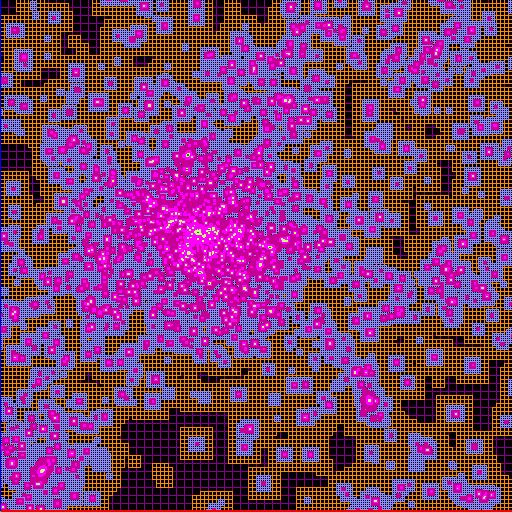
The RAMSES code is a massively parallel grid-based hydrodynamical code with adaptive mesh refinement (AMR). The data structure is called a "fully threaded tree". As opposed to "patch-based AMR", cells are refined on a cell by cell basis: it is therefore called a "tree-based AMR". A very simple interface based on "Fortran namelists" can be used to specify runtime parameters. A few routines can be modified to set more complex initial or boundary conditions. The 4 main modules are:
- the AMR module with grid refinement, parallel communications and time steping,
- the hydro module with a second-order unsplit Godunov solver with various slope limiters and Riemann solvers,
- the N-body module for colisionneless particles dynamics,
- the Poisson module with a multigrid solver for the coarse grid and a Conjugate-Gradient solver on the fine grids.






